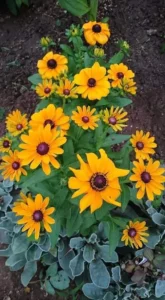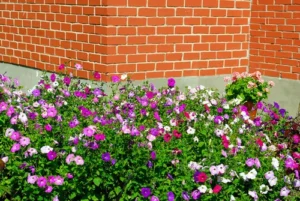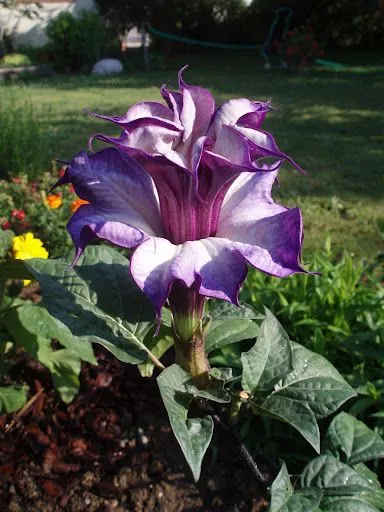Coneflowers Gardening
Coneflowers appearance and resilience
Coneflowers, known for their striking appearance and resilience, have captured the hearts of gardeners for centuries. These beautiful plants, belonging to the Echinacea genus, offer not just visual appeal but also a range of benefits that make them a cherished addition to gardens. From their historical significance to their modern uses, the world of coneflowers is as diverse and fascinating as the flowers themselves.
The origins of coneflowers trace back to the North American prairies, where they thrived in the wild landscapes of the Great Plains. The plants were first documented by European settlers in the 17th century, who marveled at the vibrant blooms and the hardy nature of these prairie perennials. Indigenous peoples had long recognized the medicinal properties of Echinacea species, using them in traditional remedies to treat a variety of ailments. This deep-rooted history adds a layer of significance to the cultivation of coneflowers, linking modern gardeners to ancient practices and natural landscapes.

Coneflowers are perhaps best known for their distinctive appearance.
The flowers feature a prominent central cone surrounded by a ring of colorful, petal-like rays that can range in color from deep purple to soft pink and even white. This unique structure not only makes them visually striking but also plays a role in attracting pollinators such as bees, butterflies, and birds. The coneflower’s design serves as a natural invitation to these creatures, contributing to the health and vitality of the garden ecosystem.
Gardening with coneflowers involves a blend of art and science.
Understanding the plant’s needs and preferences is key to creating a thriving garden environment. Coneflowers are remarkably adaptable, thriving in a variety of soil types and conditions. They prefer well-drained soil with a neutral to slightly acidic pH but can tolerate less-than-ideal conditions once established. This resilience makes them an excellent choice for gardeners looking for plants that offer both beauty and durability.
Planting coneflowers is a relatively straightforward process.
Start by selecting healthy plants or seeds from a reputable nursery or garden center. When planting, choose a location that receives full sun for at least six hours a day, as coneflowers are sun-loving plants that perform best in bright, open spaces. Prepare the soil by loosening it and mixing in organic matter such as compost to improve fertility and drainage. Plant coneflowers at the same depth they were growing in their containers, spacing them about 12 to 18 inches apart to allow for their natural growth habit.
Watering coneflowers requires a balance of diligence and restraint.
While young plants need regular watering to establish their root systems, mature coneflowers are fairly drought-tolerant and only need supplemental watering during extended dry periods. It is essential to avoid overwatering, as this can lead to root rot and other fungal issues. A layer of mulch around the base of the plants can help retain soil moisture and suppress weeds, making it easier to manage the garden and keep the coneflowers healthy.
Fertilization is another aspect of coneflower care that can be approached with both precision and flexibility. Coneflowers do not require frequent feeding, but a light application of a balanced fertilizer in early spring can support robust growth and abundant blooms. Over-fertilizing can lead to excessive foliage growth at the expense of flowers, so it is best to follow the recommended guidelines for the specific fertilizer you are using.

One of the joys of growing coneflowers is witnessing their seasonal changes.
In the spring, new shoots emerge from the soil, bringing a sense of anticipation for the blooms to come. Throughout the summer, the plants produce a profusion of flowers that attract a diverse array of pollinators and brighten the garden with their cheerful colors. As the season progresses into fall, the flowers transition into seed heads that provide food for birds and add a different texture to the garden. This progression from spring growth to fall seed heads offers gardeners a dynamic and ever-changing visual experience.
Coneflowers are also known for their longevity and low-maintenance nature. Once established, they can continue to thrive for many years with minimal intervention. They are resistant to many pests and diseases, making them a reliable choice for gardeners seeking plants that are both beautiful and hardy. However, periodic maintenance tasks such as deadheading, dividing, and pruning can help keep the plants healthy and promote continued blooming.
Deadheading, or the removal of spent flowers, is a simple but effective way to extend the blooming period of coneflowers. By cutting off the faded blooms, you encourage the plant to produce new flowers and prevent the development of seeds that could otherwise signal the end of the blooming season. This task can be done throughout the growing season and helps maintain the plants’ appearance and vigor.
Dividing coneflowers is another maintenance practice that can benefit the plants and the garden. As coneflowers mature, they may become overcrowded and produce fewer flowers. Dividing the plants every few years helps rejuvenate them and encourages vigorous growth. The best time to divide coneflowers is in the spring or fall, when the plants are not in active bloom. To divide, simply dig up the clump, separate the individual plants, and replant them in new locations.
Pruning coneflowers is a less common but sometimes necessary task. Occasionally, coneflowers can develop a problem called “flopping,” where the stems bend or break under the weight of the flowers. To address this issue, you can prune back the stems to encourage a more upright growth habit. Additionally, removing any damaged or diseased foliage will help keep the plants healthy and prevent the spread of problems.
In addition to their aesthetic and practical benefits, coneflowers have a variety of uses in the garden and beyond. They are excellent companions for other plants, offering a splash of color and attracting pollinators to mixed flower beds. Coneflowers pair well with a range of other perennials, including grasses, salvias, and asters. They can also be used in naturalized garden settings, where they blend seamlessly with wildflowers and native plants.
Coneflowers are also valued for their therapeutic properties. The Echinacea genus, from which coneflowers are derived, has been used in herbal medicine for centuries. The plant’s roots and extracts are known for their immune-boosting properties and are often used in tinctures, teas, and supplements. While modern scientific research continues to explore the full extent of these benefits, the historical use of coneflowers for medicinal purposes adds another layer of interest to their cultivation.
Gardeners interested in expanding their coneflower collections have a wealth of options to explore. The Echinacea genus includes several species and cultivars, each with its own unique characteristics. Echinacea purpurea, the purple coneflower, is one of the most well-known and widely cultivated species, but there are also other varieties such as Echinacea angustifolia, Echinacea pallida, and Echinacea tennesseensis, each offering different colors, forms, and growing habits.
In recent years, plant breeders have developed numerous hybrid varieties of coneflowers, resulting in a diverse selection of colors, shapes, and sizes. These hybrids can add new dimensions to the garden, offering everything from double blooms and unusual colors to dwarf forms suitable for smaller spaces. Exploring these new varieties can be a fun and rewarding way to enhance your garden and experiment with different looks and combinations.
The popularity of coneflowers extends beyond individual gardens and into the broader gardening community. Many gardeners enjoy sharing their passion for coneflowers through plant swaps, gardening clubs, and online forums. These communities offer a platform for exchanging plants, sharing tips, and celebrating the joys of gardening. Engaging with fellow gardeners can provide valuable insights, inspiration, and camaraderie as you delve deeper into the world of coneflowers.

The future of coneflower gardening is bright and promising. As interest in native plants and sustainable gardening practices grows, coneflowers are poised to remain a popular choice for gardeners seeking beautiful and environmentally friendly plants. The continued development of new varieties and the increasing availability of coneflower-related products and resources will support the ongoing enthusiasm for these remarkable plants.
Gardening with coneflowers offers a rich and rewarding experience that goes beyond mere cultivation. The process of growing and caring for these plants provides opportunities for creativity, learning, and connection with nature. From their historical roots to their modern applications, coneflowers represent a blend of beauty, practicality, and tradition that resonates with gardeners of all backgrounds.
Whether you are an experienced gardener or just starting out, coneflowers offer a wealth of opportunities to explore and enjoy. Their striking appearance, ease of care, and versatile uses make them a valuable addition to any garden. As you embark on your own coneflower gardening journey, you will discover the many ways these remarkable plants can enhance your outdoor space and bring joy to your gardening experience.
In summary, coneflowers are much more than just attractive garden plants. They are a testament to the beauty and diversity of the natural world, offering a range of benefits from their vibrant blooms to their medicinal properties. The practice of growing coneflowers provides a meaningful and fulfilling gardening experience, connecting you with the rich history of these plants and offering opportunities for creativity, learning, and enjoyment. Embrace the beauty of coneflowers and let them inspire your gardening efforts as you explore the many facets of this remarkable plant.


